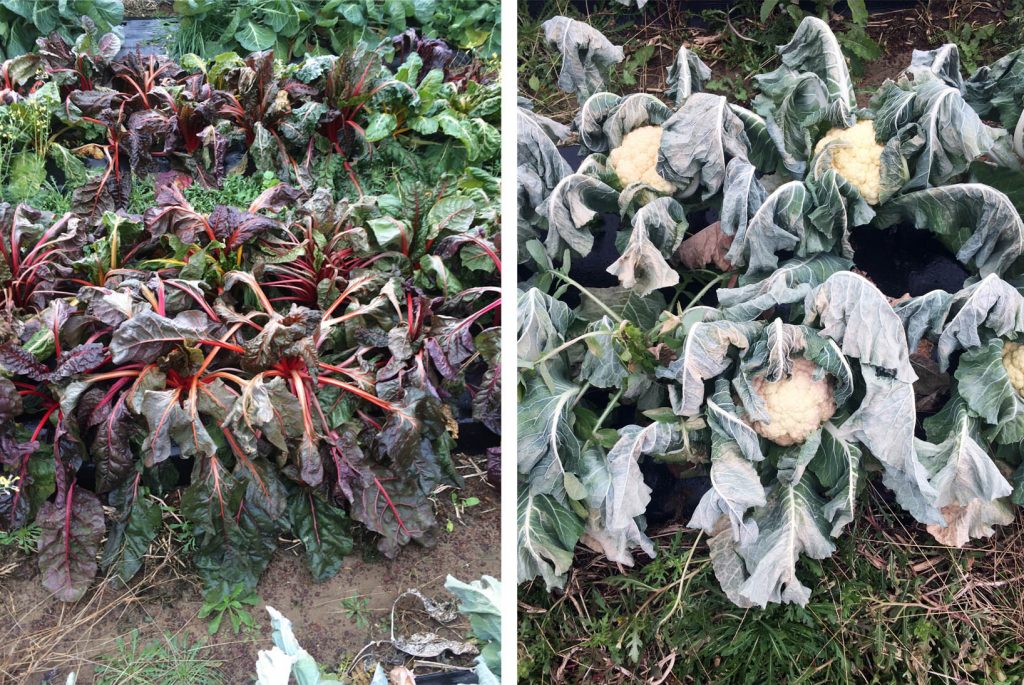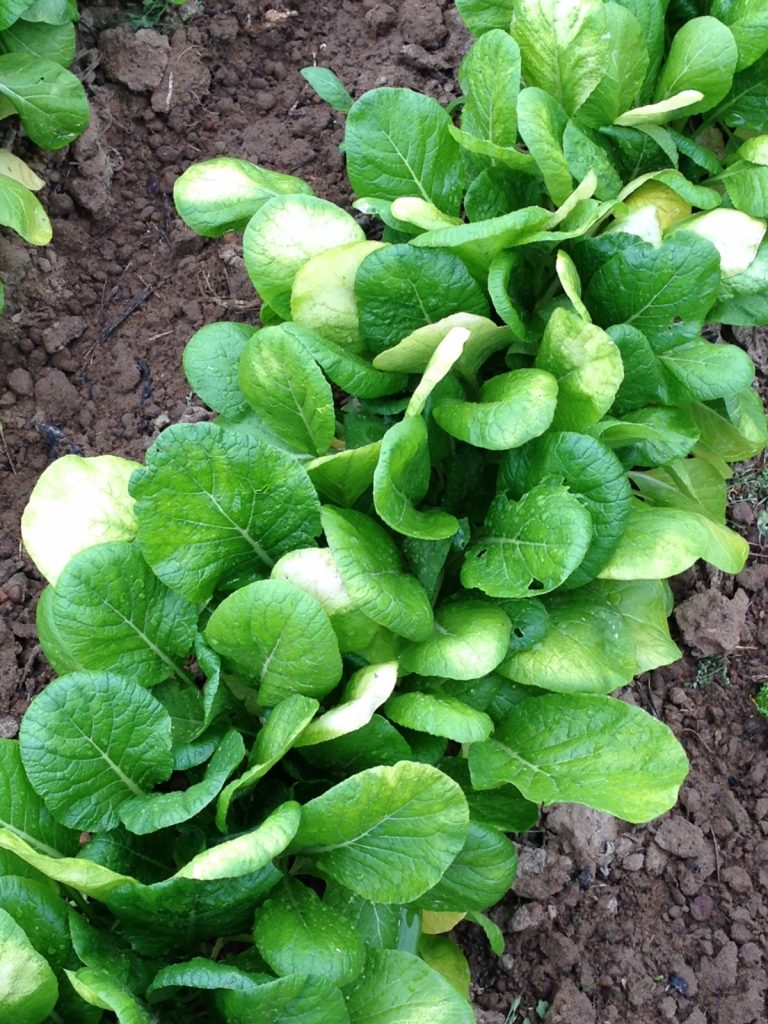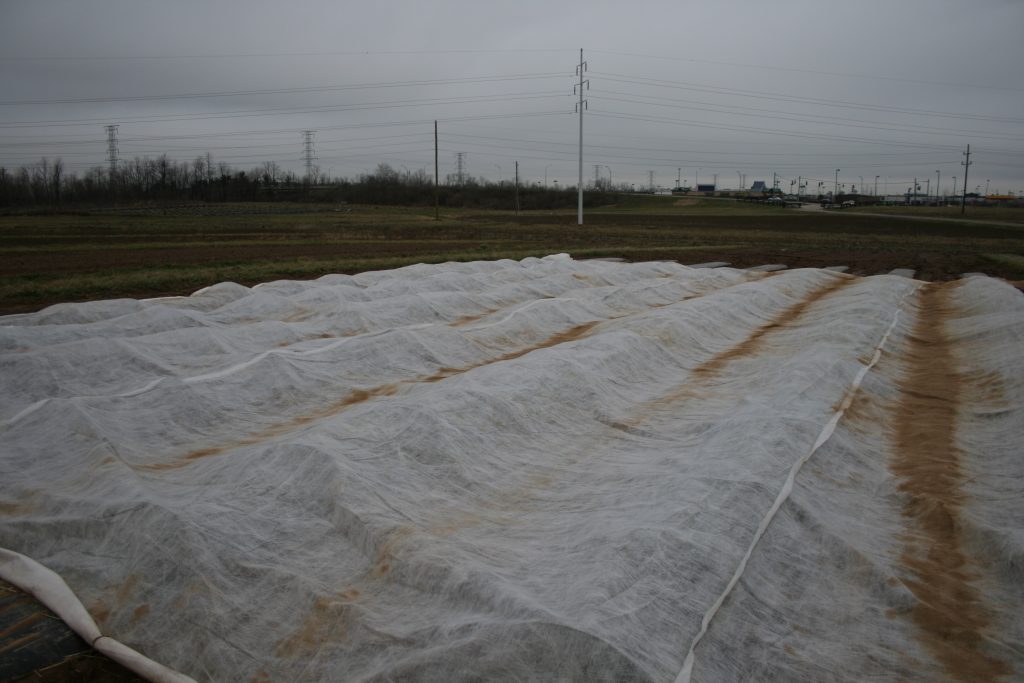
By Pam Knox and Tim Coolong
Untimely freezes can cause tremendous problems for fruit and vegetable crops.
Fall freezes quickly put an end to the growing season for most fruits and vegetables. If freezes come earlier than expected or before the crops are ready for harvest, they can provide a devastating blow to yields and reduce the value of the crops. Spring freezes may destroy blossoms on plants that have recently broken dormancy, reducing yield by eliminating potential fruit or destroying young plants.
Growers are sometimes able to reduce the impact of freezes by using frost- and freeze-protection measures to increase temperatures near the crops and prevent damage due to freezing temperatures.
TYPES OF FREEZES
There are two main types of freeze that can occur in fields, and freeze-protection methods depend in part on what type of freeze is expected to occur.

An advection freeze is caused by cold and dry air moving (“advecting”) into the production area, replacing the warmer, moister air that was already in place. An advection freeze is commonly associated with moderate to strong winds, a well-mixed air mass that does not have a temperature inversion, and low humidity. Temperatures will drop below freezing and may stay that way for an extended period.
It is difficult to protect against an advection freeze because the wind blows added heat away from the crops and makes formation of protective ice from sprinklers difficult. The lack of a temperature inversion means that wind-moving devices like tall fans or helicopters do not have access to a warmer layer of air to mix with surface air. The dry conditions also mean that irrigation is often not effective at keeping temperatures above freezing, which can lead to ice loading on the plants as the sprinklers try to keep up.
Radiation freezes occur when the sky is clear and winds are calm to light. Temperatures drop because with clear skies, radiation from the earth’s surface can quickly allow energy to escape to space. The coldest air tends to flow downhill because it is denser than the air around it, pooling in the lowest-lying areas (sometimes known as “frost pockets”). Radiation freezes are often accompanied by a temperature inversion aloft. This is a layer of air above the surface that is warmer than the air near the ground.
One freeze-protection method is to mix warmer air down to the ground using fans or helicopters, keeping the surface air warmer. Frost-protection methods are generally more effective in radiation freezes than in advection freezes, especially when strong inversions with plenty of warm air are present. Sometimes a night with cold air blowing into an area results in an advection freeze occurring the first night followed by a radiation freeze the second night when the winds die down. Therefore, growers may need to be prepared for both types of freezes.
FREEZE-PROTECTION METHODS
If temperatures are not expected to be much below freezing, heating at ground level can be employed to keep temperatures higher. This can be done using orchard heaters or even burning debris or bales of hay in open areas of the field to be protected. This method can be helpful when a radiation freeze is occurring, especially when a strong inversion is present to trap the heat near the surface, but it loses effectiveness with strong winds. It also puts out a lot of pollution and can be expensive to maintain because of the fuel and labor needed to keep the heaters burning.
If a strong inversion is present, methods for mixing the warmer air down to the surface can be used. This can include both wind machines such as large fans or helicopters. Helicopters have the advantage of being portable but are expensive to operate. Wind machines can be permanent installations or can be mobile, but only cover a limited area. If the inversion is weak, a wind machine could make matters worse by increasing evaporative cooling through the movement of the air.
Irrigation can be an effective tool for freeze protection if it is able to be applied at a rate that “keeps up” with the freezing conditions. The irrigation is applied continuously to the crops, forming ice on the crops which releases heat to the air around those crops by the latent heat released by changing liquid water into solid ice. The plant material under the ice is kept near freezing by the ice cover and transfer of energy into the plant.

If the air conditions are windy, air will mix with the ice, forming cloudy ice that is less effective at protecting the plants, which reduces their ability to survive the frost. Clear ice is a sign that the freeze protection is likely working. If the air is low in humidity, irrigation is not very successful because most irrigation systems cannot put out water at a high enough rate to keep up with the effects of the cold air. If the dew point temperature of the incoming air is below about 22° F, then irrigation is unlikely to be effective. Even higher dew point temperatures are no guarantee that irrigation will work, especially in an advection freeze where wind is a factor.
Sometimes growers will use center pivots to irrigate prior to a freeze event. Center pivots move far too slowly to directly protect a crop as described above. However, in some cases when the soil is dry, adding moisture to the soil can help it retain heat from the day, which can provide some protection in the evening. When the soil is already wet, further irrigating it will not help.
Covering plants with plastic tarps or row covers has been used with varying success. A plant can be covered by mulch or a cover overnight to keep the cold air from hitting the plant. The cover (particularly clear plastic) must be removed the next day or sunlight will heat the cover, causing potential damage to the plant from excessive heat. Floating row covers that allow 2 to 4° F of freeze protection and have various degrees of light transmission can be purchased and easily moved around fields. Row covers also provide some protection from wind and insects. Mulch or plastic covers will be most effective when the ground has been warmed by the sun during the day. They are also aided by moist soil conditions, which help hold heat in the ground.
Other methods such as cultivating ahead of a frost or spraying chemicals to prevent frost formation on the leaves have been tried by some growers. However, they have not proven to be effective in field trials and could cause additional damage to the plants, so should be undertaken with caution. In some cases, cultivation can expose roots to freezing temperatures and cause further damage.
See secure.caes.uga.edu/extension/publications/files/pdf/B%201479_1.PDF for more information about freeze-protection methods and how to run a frost protection irrigation system.









